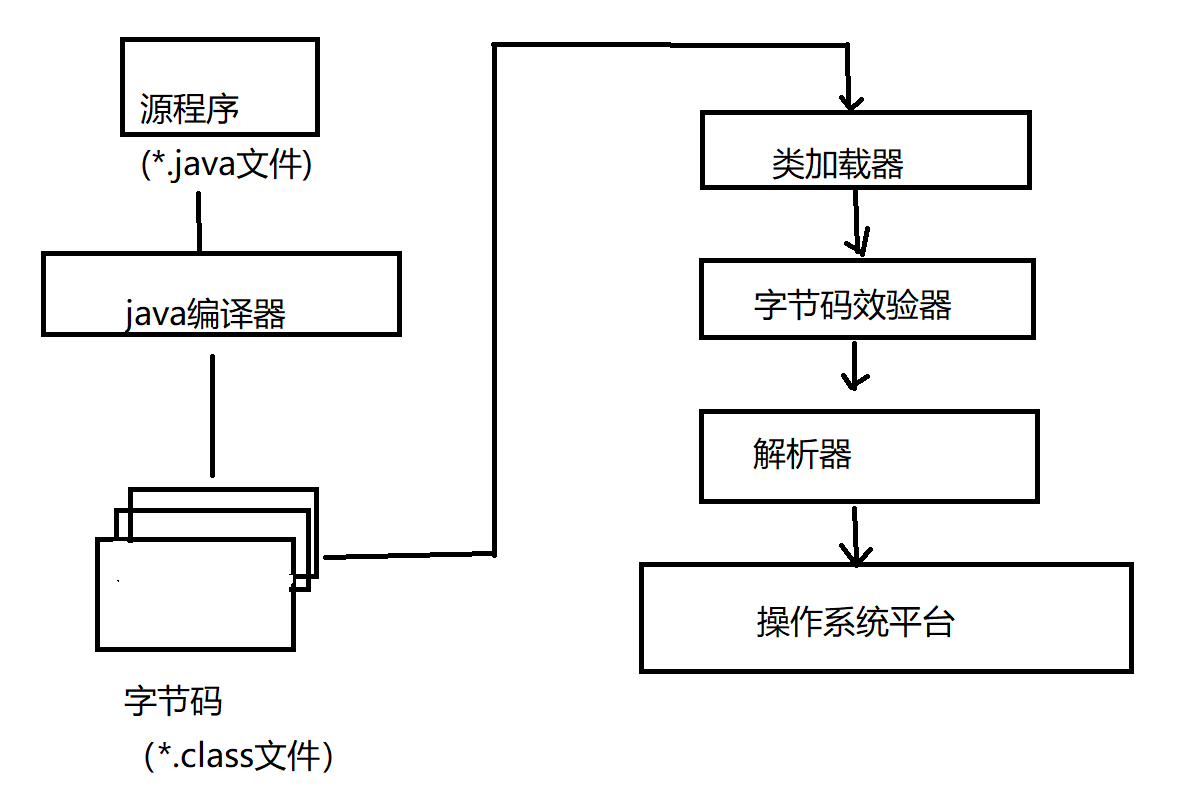类的加载与ClassLoadr

类加载器的作用:
-
类加载器的作用:将class文件字节码内容加载到内存中,并将这些静态数据转换成方法区的运行时数据结构,然后在堆中生成一个代表这个类的java.lang.Class对象,作为方法区中类数据的访问。
-
三个步骤来对该类进行初始化:
类的加载(Load)(将类的class文件读入内存并为之创建一个java.lang.Class对象。此过程由类加载器完成)
package Reflection1;
import java.io.FileInputStream;
import java.io.FileNotFoundException;
import java.io.InputStream;
import java.util.Properties;
public class ClassLoaderTest
{
public static void main(String[] args)
{
//对于自定义类,使用系统类加载器进行加载
ClassLoader classLoaderTest=ClassLoaderTest.class.getClassLoader();
System.out.println(classLoaderTest);//系统加载器
//调用系统类加载的getParent():获取扩展类加载器
ClassLoader parent = classLoaderTest.getParent();
System.out.println(parent);//上一层(扩展类加载器)
//调用扩展类加载器的getParent():无法获取引导类加载器
//引导类加载器主要负责加载java的核心类库,无法加载自定义类的
ClassLoader classLoader=parent.getParent();
System.out.println(classLoader);//看下还能不能往上找
ClassLoader classLoader1 = String.class.getClassLoader();
System.out.println(classLoader1);
ClassLoaderTest classLoaderTest1=new ClassLoaderTest();
try {
classLoaderTest1.test2();
} catch (Exception e) {
throw new RuntimeException(e);
}
}
/*
Properties:用来读取配置文件
*/
public void test2() throws Exception {
Properties prot=new Properties();
//此时的文件默认在当前的module下
//读取配置文件方式1
// FileInputStream inputStream=new FileInputStream("jdbc.properties");
// prot.load(inputStream);
//读取配置文件方式2:使用ClassLoader
//配置文件默认识别为Module的src下
ClassLoader classLoader = ClassLoaderTest.class.getClassLoader();
InputStream resourceAsStream = classLoader.getResourceAsStream("jdbc.properties");
prot.load(resourceAsStream);
String user = prot.getProperty("user");
String password = prot.getProperty("password");
System.out.println(user+"="+password);
}
}
package Reflection1;
import java.io.FileInputStream;
import java.io.FileNotFoundException;
import java.io.InputStream;
import java.util.Properties;
public class ClassLoaderTest
{
public static void main(String[] args)
{
//对于自定义类,使用系统类加载器进行加载
ClassLoader classLoaderTest=ClassLoaderTest.class.getClassLoader();
System.out.println(classLoaderTest);//系统加载器
//调用系统类加载的getParent():获取扩展类加载器
ClassLoader parent = classLoaderTest.getParent();
System.out.println(parent);//上一层(扩展类加载器)
//调用扩展类加载器的getParent():无法获取引导类加载器
//引导类加载器主要负责加载java的核心类库,无法加载自定义类的
ClassLoader classLoader=parent.getParent();
System.out.println(classLoader);//看下还能不能往上找
ClassLoader classLoader1 = String.class.getClassLoader();
System.out.println(classLoader1);
ClassLoaderTest classLoaderTest1=new ClassLoaderTest();
try {
classLoaderTest1.test2();
} catch (Exception e) {
throw new RuntimeException(e);
}
}
/*
Properties:用来读取配置文件
*/
public void test2() throws Exception {
Properties prot=new Properties();
//此时的文件默认在当前的module下
//读取配置文件方式1
// FileInputStream inputStream=new FileInputStream("jdbc.properties");
// prot.load(inputStream);
//读取配置文件方式2:使用ClassLoader
//配置文件默认识别为Module的src下
ClassLoader classLoader = ClassLoaderTest.class.getClassLoader();
InputStream resourceAsStream = classLoader.getResourceAsStream("jdbc.properties");
prot.load(resourceAsStream);
String user = prot.getProperty("user");
String password = prot.getProperty("password");
System.out.println(user+"="+password);
}
}
user=zf;
password=abc1234



 浙公网安备 33010602011771号
浙公网安备 33010602011771号